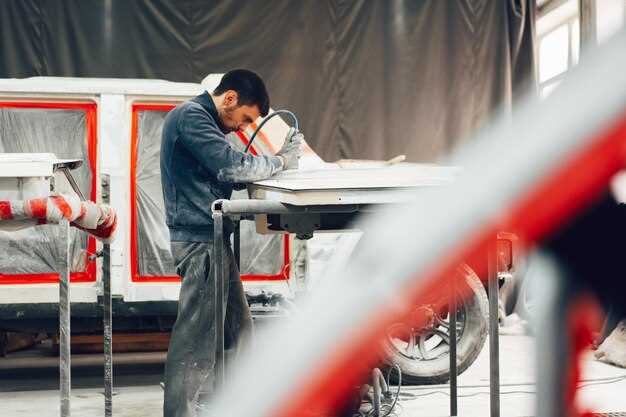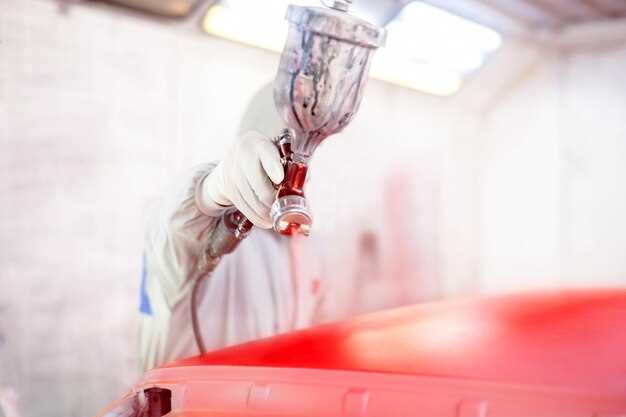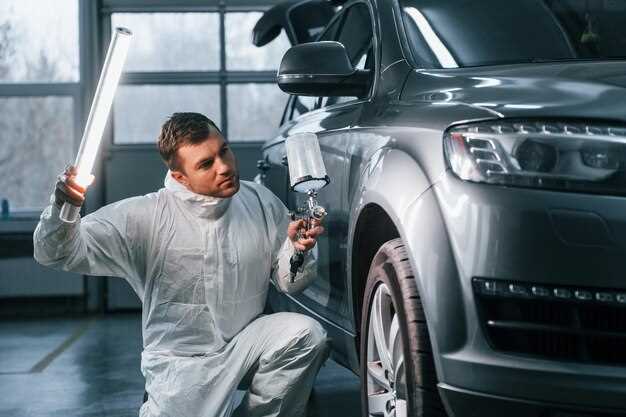Painting Your Fiat – DIY or Professional Job?

When it comes to enhancing the aesthetics of your Fiat, one of the most impactful ways is through a fresh coat of paint. The bodywork of your vehicle plays a crucial role not only in its appearance but also in its overall value. Whether you are considering a DIY approach or opting for a professional service, there are several factors to consider to achieve the best results.
Painting your Fiat can be a rewarding project if you have the right skills and tools. A DIY paint job allows you to personalize your car, choosing colors and techniques that reflect your style. However, it also requires a considerable investment of time, meticulous preparation, and knowledge of the proper techniques to avoid common pitfalls. On the other hand, hiring a professional offers the benefit of expertise and experience, ensuring a high-quality finish that can withstand the test of time.
In this article, we will explore various tips and considerations for both DIY enthusiasts and those contemplating hiring a professional. Understanding the nuances of vehicle bodywork and the painting process will help you make an informed decision that best suits your needs and budget.
Choosing the Right Paint and Materials for Your Fiat

When it comes to enhancing the appearance of your Fiat through DIY painting or bodywork, selecting the appropriate paint and materials is crucial for achieving a professional finish.
Type of Paint: Automotive paints are specifically designed to withstand outdoor conditions and provide a durable coating. Choose between acrylic lacquer, known for its glossy finish and quick drying time, or urethane paint, which offers superior durability and resistance to UV rays. Both types have their pros and cons, so it’s essential to consider your Fiat’s specific needs as well as your desired finish.
Color Matching: If you’re touching up existing paintwork, achieving an accurate color match is vital. Most manufacturers, including those of Fiat, provide color codes which you can use to find the exact shade for your vehicle. Many auto parts stores and online retailers offer pre-mixed spray cans that match original Fiat colors.
Primers and Clear Coats: Using a primer is essential for ensuring paint adhesion and longevity. A good automotive primer will create a uniform surface for the color paint to adhere to, reducing the chances of peeling or chipping. Follow this up with a clear coat, which provides a protective layer against scratches and enhances the paint’s gloss.
Tools and Application: Invest in quality tools for the best results. A paint sprayer can offer a more even application compared to traditional brushes. Additionally, make sure to use appropriate protective equipment, including masks and gloves, to ensure safety during the painting process.
By carefully selecting the right paint and materials, your Fiat can not only look great but also stand the test of time against daily wear and tear.
Step-by-Step Guide to DIY Painting Your Fiat

Before you begin painting your Fiat, ensure you have the right tools and materials. You will need sandpaper, a primer, automotive paint, a clear coat, masking tape, and drop cloths to protect surrounding surfaces.
Start by preparing the work area. Choose a well-ventilated garage or outdoor space away from dirt and debris. Lay down drop cloths to catch any paint drips and protect the floor.
Next, wash your Fiat thoroughly to remove dirt, grime, and any wax. This step is crucial for achieving a smooth finish. After washing, allow the surface to dry completely.
Inspect the bodywork for scratches, dents, or rust. Address any imperfections by sanding down rough spots and using filler for dents. Once repairs are made, sand the entire area to create a rough surface for better paint adhesion.
Once the bodywork is smooth, clean the surface again to eliminate any dust from sanding. Use a tack cloth or a lint-free rag for this purpose.
Mask off areas you don’t want to paint, such as windows, tires, and trim. Use high-quality masking tape to ensure clean lines and protect adjacent surfaces from overspray.
Apply a primer to the surface to prepare it for paint. A primer will help the paint adhere better and improve the overall finish. Allow the primer to dry according to the manufacturer’s instructions before moving on to the next step.
Now, it’s time to apply the paint. Shake the paint can thoroughly and start with thin, even coats. Hold the spray can about 6-12 inches from the surface and use steady, side-to-side motions. Allow each coat to dry before applying additional layers. Aim for two to three coats for an even finish.
After achieving the desired color, apply a clear coat to protect the paint and add shine. Similar to the painting process, apply the clear coat in thin layers and allow it to dry completely between applications.
Once the final coat is dry, carefully remove the masking tape and clean up any overspray using a soft cloth and solvent. Allow your newly painted Fiat to cure for several days, ensuring the paint fully hardens before taking it on the road.
Finally, give your Fiat a final inspection to ensure an even application and touch up any areas if necessary. With patience and attention to detail, you can achieve a professional-looking finish on your Fiat.
When to Hire a Professional for Fiat Bodywork
Deciding whether to paint your Fiat on your own or hire a professional can be challenging. Here are key considerations that can help you determine when to bring in an expert for Fiat bodywork.
1. Complexity of Damage: If your Fiat has significant dents, scratches, or rust issues, it’s advisable to hire a professional. Experts have the skills and tools necessary for repairing complex damages that require more than just a simple paint job.
2. Quality of Finish: Achieving a flawless paint finish takes experience. Professionals are equipped with advanced techniques and equipment that enhance the quality of the paint application, providing a more durable and visually appealing result.
3. Specialized Techniques: For custom paints or specialized finishes (like metallic or pearl), professionals have the expertise needed to execute these techniques properly. If you want a unique look for your Fiat, a professional is often the best choice.
4. Time and Effort: Painting a car requires a substantial investment of time and effort. Professionals can complete the job more quickly, allowing you to return to the road sooner. If your schedule is tight, hiring an expert can save you from extended downtime.
5. Safety Concerns: Painting involves handling chemicals and materials that can be hazardous if not managed properly. Professionals are trained to work safely with these materials, reducing the risk of exposure or accidents.
6. Warranty and Insurance: Many professionals offer warranties on their work and may be able to help with insurance claims related to bodywork. This added layer of security can be beneficial in case of future issues.
Ultimately, while DIY painting may seem appealing, evaluating the complexity of the job, your skill level, and the desired outcome can help you make an informed choice. In cases of significant bodywork or when high-quality results are essential, hiring a professional is often the best option for your Fiat.



